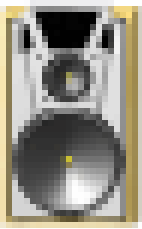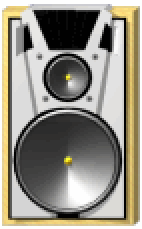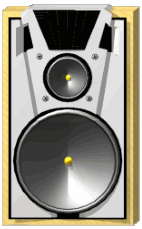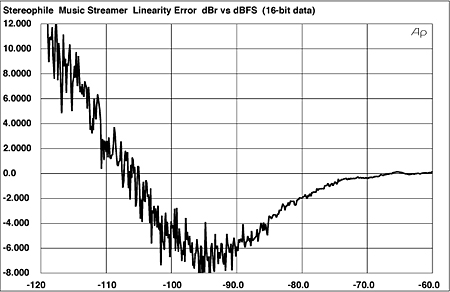- AccurateRip
- Acoustid
- AES/EBU
- AirPlay
- Amplifier
- aptX
- Audio file formats
- ASRC
- AVB
- Bit perfect jitter
- Bits: 16 or 24
- Bit perfect playback
- Bitrate
- Bluetooth
- Burn-in
- BWF
- Cables
- CDtext
- Chromecast
- Clipping
- Clock
- Codec
- Compression
- CRC
- Crossover
- Cue sheet
- DAC
- Damping
- DASH
- Digital
- Digital Room Correction
- Dither
- DLNA
- Drivers
- DoP
- DSP
- EBU R128 (loudness)
- FFT
- FireWire
- Freedb
- Gapless playback
- Generation loss
- HDMI
- Headphone listening
- Hearing
- Hires recording
- Homeplug
- I2S
- ID3
- Inter sample peak
- LDAC
- Linearity (DAC)
- Memory playback
- Music Server
- OCF
- OFC
- PCM
- Perception
- RAID
- ReplayGain
- Ripping
- RFI
- RIAA
- Router
- Sampling, up and over
- Sample Rate Conversion
- Speakers
- S/PDIF
- Storage
- Sync
- Tagging
- Toslink
- Transcoding
- UAA
- Units
- UPnP
- USB
- VST
- WiFi
- WiSA
16 or 24 bits
Digital audio files in general have a bit depth of 16 or 24 bits.
This means the sample is represented with a precision of 16 or 24 bits integer.
 |
 |
 |
| 8 bit | 16 bit | 24 bit |
Improve the resolution 256 times!
Often pictures are used to demonstrate the difference between high and low resolution audio.
Indeed, the higher the resolution, the sharper the image.
Can we expect the same when moving from 16 bit (CD audio) to 24 bit?
If we look at the numbers, the answer is yes.
16 bit integer allows for 2^16= 65536 different values
24 bit integer has 2^24= 16777216 different values, a 256 times better resolution!
No doubt, this must be a substantial audible difference.
Back to the pictures.
If we increase the resolution, the image becomes sharper.
What about a 5000*5000 resolution.
The answer is simple, it won’t fit on the screen.
Whatever the resolution is, the pixels of our screen remain the same size.
In audio more or less the same happens with the bits.
1 bit=6 dB
SNR=6N+1.8 dB (N in bits) to be exact but for convenience sake, let’s use 6.
The loudest possible signal in digital audio (all bits are 1) is the reference, this is called 0 dBFS (dB Full Scale).
All other measurements expressed in terms of dBFS will always be less than 0 dB (negative numbers).
16 bits will go down to -96 dBFS and
24 to -144 dBFS
In essence, 24 bits continue where 16 bits stops. It can resolve micro details 16 bits can’t.
Noise floor
The theoretical maximum signal-to-noise ratio in an analogue system is around 130dB.
In practice 120 dB is a very good value.
You can’t escape thermal noise
A couple of specs:
Benchmark ADC1 24 bits 192 kHz A/D |
THD+N, 1 kHz at -1 dBFS | -102 dBFS, -101 dB, 0.00089% |
| Benchmark DAC1 | THD+N: (w/-3 dBFS input) |
-107 dB, 0.00045% |
| Prism Orpheus AD (line in) | THD+N |
-111dB (0.00028%, -0.1dBFS |
Yes 24 bit can capture those very soft tiny details 16 bit can’t but pretty soon you end in the noise floor of the equipment.
The big debate
You can find many debates on the internet about 16 vs. 24
In the pro world this debate has been settled, almost everybody is recording with 24 bits today.
They have some very good reasons to do so.
Headroom
When recording, you can’t predict the loudest signal.
You need some headroom.
If you keep a marging of aproximately -20 dBFS (see the standards below), this translates to aproximately 3 bits.
Effectively you are recording with a 16-3=13 or a 24-3=21 bits resolution.
Obvious 24 bits is to be prefered.
Standards for headroom
European & UK calibration for Post & Film is −18 dBFS = 0 VU
BBC spec: −18 dBFS = PPM "4" = 0 dBu
American Post: −20 dBFS = 0 VU = +4 dBu
Orchestral −18 dBFS = 0 VU = +4 dBu
Rock and / or Radio −16, or −14, or −12 dBFS = 0 VU = +4 dBu
Digi 002 is only capable of −14 dBFS.
German ARD & studio PPM +6 dBu = −10 (−9) dBFS. +16 (+15)dBu = 0 dBFS. No VU.
EBU R68-2000 - The European Broadcasting Union recommends: digital level
−9 dBFs (maximum). You have to keep the upper 9 dBs empty without any use.
The reference level is −18 dBFs. 0 dBFs is equal to +15 dBu.
BTW: If you are in need of doing some calculations, go to this page in the Sengpiel site.
DSP
Mixing and all other tricks the sound engineer has at his disposal means doing calculation as all DSP is simply calculating.
An integer can only contain natural numbers.
In an integer world 10/2=5 and 9/2=4 or 5 but not 4.5 because you cannot store the remainder in an integer.
Therefore you have to round the signal you are processing to the nearest integer.
This is the quantization error.
This affect affects the LSB both in 16 and in 24 bits.
In case of 16 bits this is at -96 dBFS, in case of 24 bits at – 144 dBFS.
The latter is way below the noise floor of any gear.
Pro-software use 64 bits precision in the calculations to keep the quantization error down.
Likewise Intermediate file are stored in float to keep this error down.
Playback
The headroom argument is no longer valid, one knows the maximum level when producing the final master.
Noise floor: your gear must have an S/N better than 96 dB otherwise the extra bits 24 offers will be drowned in the noise. But most gear does.
DSP: if you use digital volume control or any other kind of DSP e.g. re-sampling, you can profit by using 24 bits.
In case of 16 bits the result must be dithered otherwise the artifacts of the DSP become audible.
Again 24 bits has the advantage because of the quantization error.
If you have hardware supporting 24 bit words, padding 16 bits audio with 8 bits does the job too.
An example of the advantage of 24 bits when using volume control can be found here.
Can you hear the difference between 16 and a 24 bit recording?
-96 dB is very soft, can you really hear all those very tiny details below this level?
A common trick is to listen to the decay of a sound at a very loud level.
In case of 16 bits it will stop abruptly, in case of 24 it will sink into the noise floor assuming your gear is quiet enough to revolve substantial more than -96 dBFS.
The danger of 24 bits
Since 16-bit already provides enough dynamic range to deafen you, 24-bit provides enough to literally kill you.
This is a common misconception often mentioned on audio fora.
This would be true if a 24 bit file plays substantially louder that a 16 bit one.
The maximum output of a DAC is 0 dBFS, be it a 16 bit or a 24 bit audio file.
Hence a 16 bit file format goes down to -96 dBFS and a 24 bit down to -144dBFS.
A 24 bit will resolve the (tiny) details below -96 dBFS
A 24 bit file doesn’t play louder, it can play softer!
Linearity
The number of bits a DAC supports is a nominal value.
It is not the performance metric.
All it says is that the DAC accepts samples with a 16 or a 24-bit word length.
Not to be mistaken for being able to resolve this sample to the last bit.

A perfect DAC would have no linearity error.
As you can see in the graph, this DAC starts to deviate at -70 dBFS.
As 70/6=11.6 this DAC is more or less able to reproduce 12 of the 16 bits perfect.
High quality DACs are able to reproduce up to 22 bits correctly.
This is discussed in more detail here.
The debate continues
Audiophiles will probably never reach consensus on any subject:
http://www.head-fi.org/forums/f133/24bit-vs-16bit-myth-exploded-415361/
http://www.hydrogenaudio.org/forums/index.php?showtopic=49843
http://www.audioasylum.com/cgi/vt.mpl?f=pcaudio&m=70002
- Quantization (signal processing) - Wikipedia
- Bit depths. I am lacking some understanding - Tony Lauck

